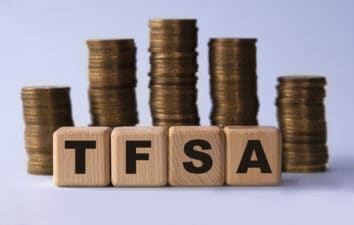As a result of sharply weak oil prices, many energy companies have slashed their dividends as a means of shoring up cash flow in what is a capital-intensive industry.
Despite this, Crescent Point Energy Corp. (TSX:CPG)(NSYE:CPG) continues to maintain its dividend, a monster double-digit yield approaching 15%, leading many critics to claim it is unsustainable with oil now under US$50 per barrel.
Now what?
If history is any indication, the likelihood of Crescent Point maintaining its dividend is exceptionally high. The last time oil slipped below US$50 per barrel was during the global financial crisis, when the WTI fell to as low as $31 per barrel, yet Crescent Point still maintained its dividend. This leaves a big question for investors: with weak oil prices set to continue for longer than expected, can Crescent Point do the same this time?
At first glance the dividend certainly doesn’t appear sustainable because dividend payments are regularly in excess of net earnings.
However, management has committed to maintaining the dividend and the company has a range of levers at its disposal that will allow it to protect its dividend. These include its hedging program, which has over half of its 2015 production hedged at a weighted average of higher than $88 per barrel and just over a third of its 2016 production at $83 per barrel.
It also has an extremely low degree of leverage, with net debt a mere 1.6 times operating cash flow. This endows Crescent Point with a considerable degree of flexibility, including the ability to increase debt in order to meet its financial commitments.
There is also the option of cutting back on capital spending if Crescent Point finds itself in dire straits. This would free up further funds that could be directed to dividend payments.
Let’s not forget that Crescent Point continues to focus on boosting production from those oil assets that have breakeven costs per barrel, such as in the southeast Saskatchewan and the Manitoba Bakken. This helps to boost margins and ultimately cash flow, further enhancing its ability to maintain the current dividend payment.
Finally, there is the dividend reinvestment program that allows Crescent Point to pay a portion of its dividends by issuing additional shares to investors who have elected to participate in the program. At this time, with about a third of its total dividends being paid through the program, it is creating cash savings of over $300 million annually.
So what?
History has shown that Crescent Point has one of the most durable dividend payments in the energy patch. Now, with oil below US$50 per barrel and prices remaining weak for longer than expected, this does bring the sustainability of the dividend into question, although there are no signs that it will be cut at this time.
This makes Crescent Point an attractive investment. Not only does it have a yield approaching 15%, but it is one of the best energy companies operating in the patch. It has a solid balance sheet and a diverse portfolio of high-quality, low-decline rate oil assets. This means that with its share price down by 38% for the year-to-date, and at less than half of its 52-week high, investors are still buying a high-quality company at bargain price, even if it is forced to cut its dividend.







